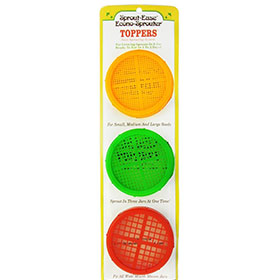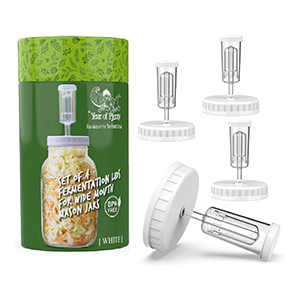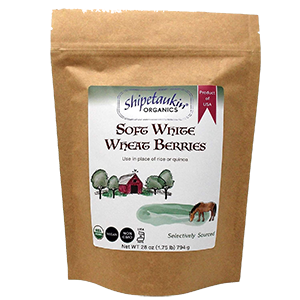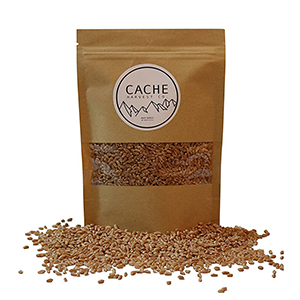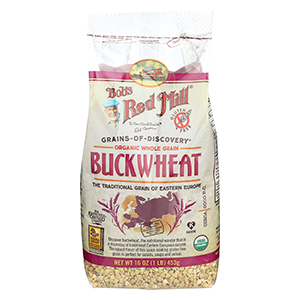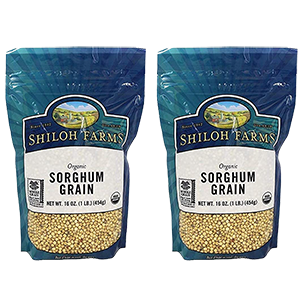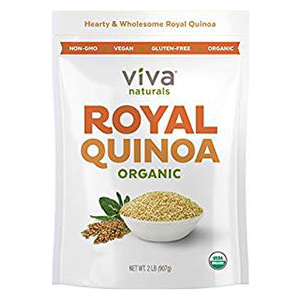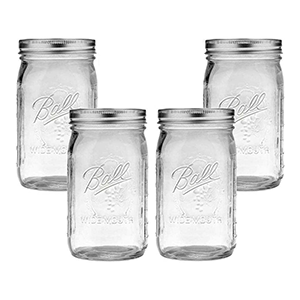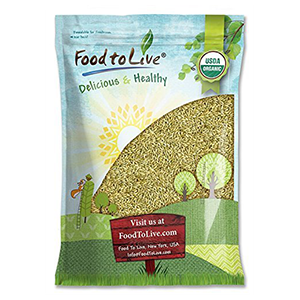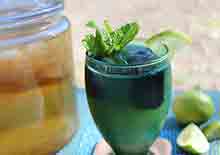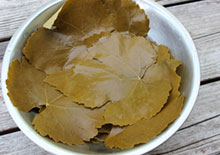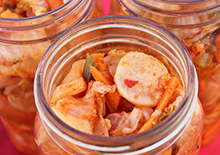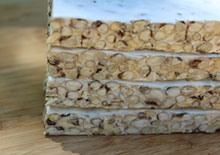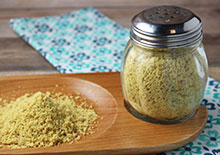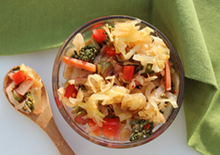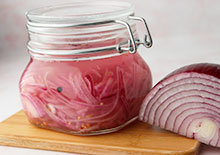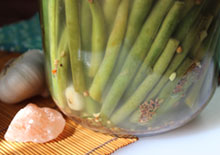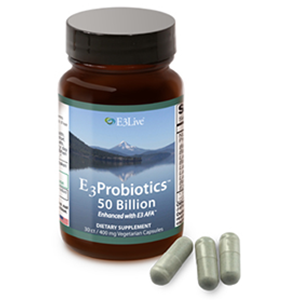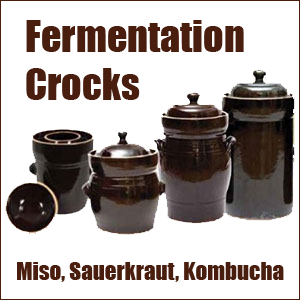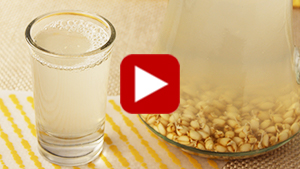- Home
- Fermented Food Recipes
- Rejuvelac Recipe
Rejuvelac Recipe and Benefits, Easy DIY Probiotic Drink
Intro | Main 3 Benefits | How to Use | Things You Will Need | How to Sprout Grains | Sprouting Gluten-Free Grains | Rejuvelac Recipe | Precautions | Shop
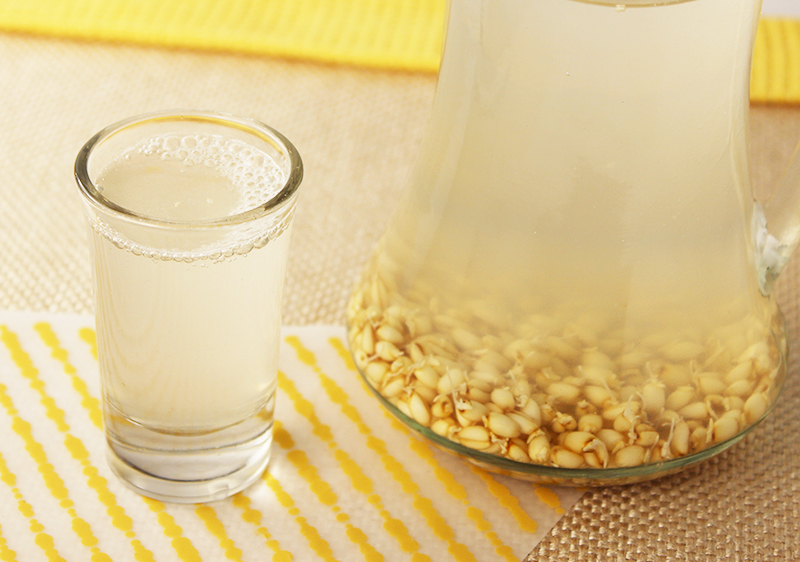
Rejuvelac is a drink made by infusing already-sprouted grains in pure water for about 1-3 days. The strained fermented liquid is rejuvelac.
Healthwise, it is known for its "rejuvenating" properties, hence the name. It’s essentially like making a combination liquid probiotic and enzyme supplement.
Rejuvelac is not commonly found in stores, like kombucha or kefir, it must be made at home. One of the best parts to making homemade rejuvelac is that it is VERY easy to do, requiring minimal ingredients and supplies.
Table of Contents
Intro | Main 3 Benefits | How to Use | Things You Will Need | How to Sprout Grains | Sprouting Gluten-Free Grains | Rejuvelac Recipe | Precautions | Shop
Most nutrition and diet enthusiasts are aware that it's good to include some kind of fermented foods in the diet on a regular basis. We like to change it up with variety and rejuvelac is a simple to make option over other more technical fermented food recipes and drinks that may require special cultures or equipment.
Likewise, if you're wanting to take a break from expensive probiotic or enzyme products, rejuvelac can make an affordable DIY alternative.
It is also sometimes utilized as a culture starter when making other types of ferments such as nut and seed cheeses. (*)
Although you wouldn't think that water sitting around for a couple of days with sprouted grains in it would taste all that great, the fermentation process actually produces a very clean tasting, tangy drink with a citrus-like aroma. Flavors can of course vary slightly according to the types of grains you're using.
Over the course of many years, and our original page on how to make rejuvelac (over 6 years ago), we've updated a few methods but stayed pretty close to our initial rejuvelac recipe.
Below we will share the step-by-step process plus tips when sprouting three of our favorite gluten-free variations. But briefly, let’s go over the list of rejuvelac's healthful attributes and how it's typically used.
The Main 3 Benefits of Rejuvelac
1) Probiotics - Rejuvelac is a source of probiotic nutrients produced as a result of the lacto-fermentation process that's initiated by the cultures on the sprouted grains and their carbohydrate content. In 2020 research using rejuvelac for cashew cheese fermentation, it was shown to be composed of the bacterial strains Pediococcus and Weissella. Both of these genera are in the family of lactic acid bacteria, the kind you need to support a healthy gut microbiome.
2) Enzymes - Sprouted grains themselves are known to have an energizing influence on the body, mostly due to their improved level of sprout-activated enzymes that continue to increase when fermented.
3) Digestive Aid - Fermented drinks like rejuvelac can support digestive processes, provide cleansing actions and encourage bowel regularity.
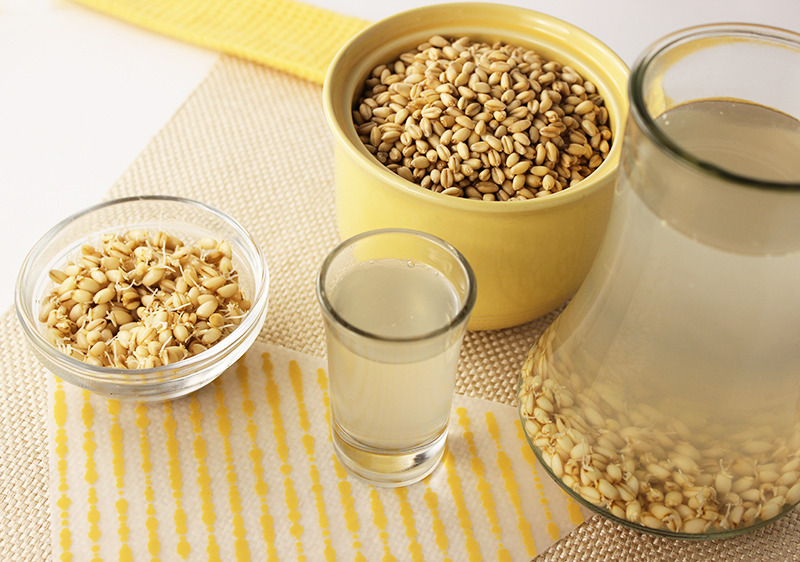
How to Use Rejuvelac
Rejuvelac is traditionally consumed in small quantities between 1-4 ounces, not in large amounts. Since everyone is a little bit different, some may need more and some may need less to feel its influence. It is best to start out with a small one-ounce dose and build up to more over time.
We personally recommend, for the highest health benefits, drinking rejuvelac before or between meals on an empty stomach. One or two ounces first thing in the morning can be a great way to get things moving.
How to Make Rejuvelac, Things You Will Need
1) The Grains
2) A Glass Jar and Mesh Lid
3) Optional Fermentation Lid w/ Airlock
1) The Grains
For those that don't have gluten sensitivities, soft wheat berries, kamut and rye are our favorites when making rejuvelac.
Some people (but not all) with minor allergies to gluten find that the sprouting and culturing process helps to break down any glutenous components, making them more digestible.
But there are several gluten-free types that can work as well. Over the years of making rejuvelac, we have found that the best gluten-free grains are buckwheat, quinoa and sorghum. (See more below for sprouting tips using each variety.)
Whatever grains you decide to use, it is important to purchase raw, non-irradiated, non-heat-treated varieties. These types are the only ones that are technically still alive and will sprout when given the opportunity to do so. We of course always use organic non-GMO grains.
2) A Glass Jar and Mesh Lid
We like to use wide-mouth mason jars because they are easier to use, plus most mesh sprouting lids are designed to fit this size.
We prefer the plastic screens that come in a number of different sizes with small, medium or larger holes. This can be helpful for using a number of different grain varieties.
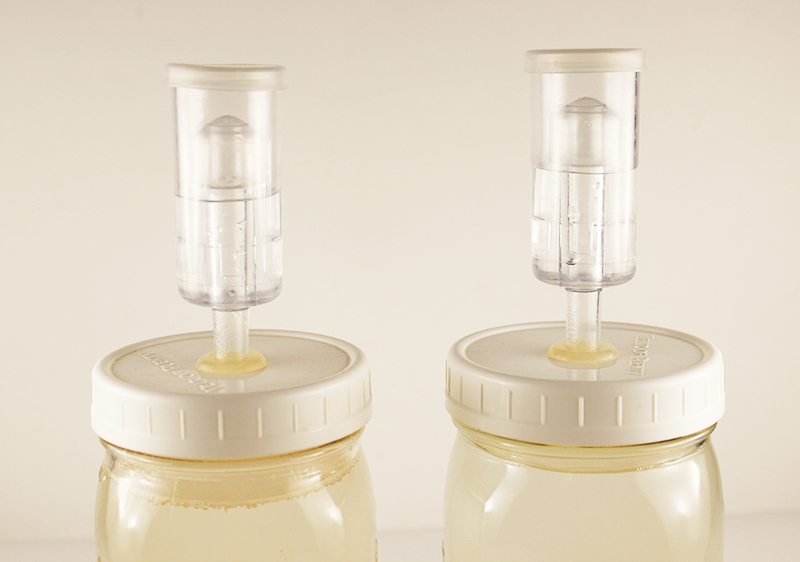
3) Optional Fermentation Lid with an Airlock
In the old days, before the "jar airlock" was even invented we used to use a loose lid or cloth to cover the fermenting rejuvelac.
Now we always use fermentation lids with airlocks to prevent any other
air-borne yeast or contaminants from getting into the jar. They
basically help keep the good microbes in and the bad microbes out.
They are widely available online and fit most standard-size wide-mouth mason jars.
Note: It is always important when culturing foods that you do so in a
clean environment and make sure to thoroughly wash all equipment you are
using. This helps to avoid any unwanted contaminants from ruining the
ferment. Generally, a successful rejuvelac recipe is identified by a pleasant taste and smell. But for more on how to tell if your ferment has gone bad, visit our other rejuvelac page.
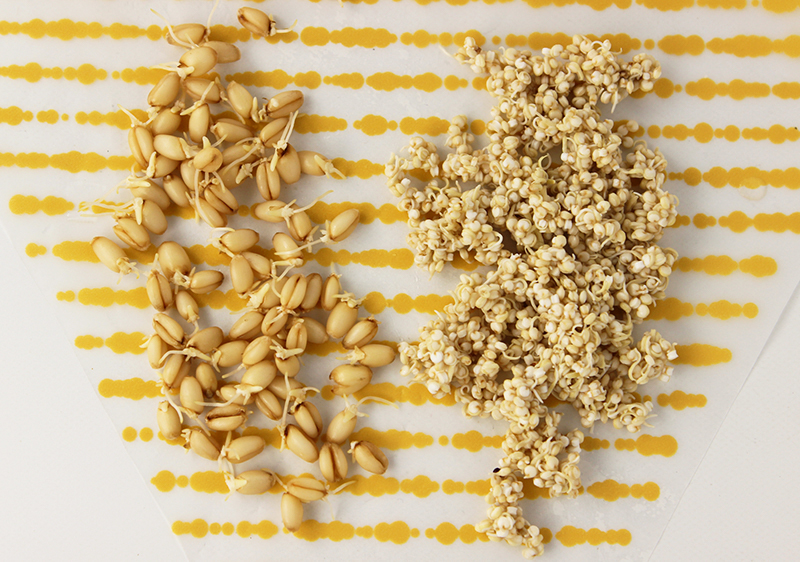
How to Sprout Grains
Soaking the grains is a necessary part of the sprouting process. When they swell up with water and are strained, they are given what they need to sprout tiny white tails.
Directions for Sprouting Grains:
- Take 1/2C of dry grain and rinse it thoroughly in filtered pure water.
- Soak them in 3 cups of water overnight (or about 8 hours), using a one-quart mason jar with a lid.
- Place a clean mesh lid on the top of the jar and strain out the soak water.
- Fill the jar again with pure water to rinse and strain again.
- Flip the jar over, with the mesh lid angled downward, into a dish or container to drain.
- Rinse your jar of grains at least once a day.
- Watch for little sprouting white tails after day one or two days. In warmer temps, it won't take long.
- Once they sprout you are ready to make rejuvelac.
Tips for Sprouting 3 Gluten-Free Grains
1) Quinoa - Although most quinoa these days is pre-rinsed, it can still contain saponins. So, it’s good to rinse them well. It's also important when sprouting quinoa that you make sure the tiny grains aren't clumping up which can cause them to spoil when sprouting.
2) Buckwheat - Buckwheat groats produce a thick goopy water when soaked, so they need to be rinsed about 3 times before sprouting. Fill the jar all the way up and stir then strain.
3) Sorghum - Sorghum being a somewhat larger grain may need a little longer soaking time compared to others. It also has more starch content and may need to be rinsed twice before sprouting.
Rejuvelac Recipe
Rejuvelac is made the same way regardless of the sprouted grain you are using. Ideally, an atmospheric temperature around 70-75°F (21-24°C) is optimal for best results.
The number one rule when making any fermented food it is do so in a clean environment with sanitized equipment.
Ingredients:
- 1/2C dry grain of choice (sprouted)
- 3C pure filtered or distilled water
Directions:
- Using a clean one-quart (32oz) jar, add the sprouted grains and cover about one inch from the top with pure water (or around 3 Cups).
- Cover the jar with an airlock fermentation lid (or loose lid or a cloth if you prefer).
- Ferment on a countertop or cupboard space, but keep out of direct light.
- Gently swirl the jar once a day to move the grains around.
- Allow to ferment for 1-3 days or until it becomes slightly cloudy with some bubbles moving from bottom to top, especially when you move the jar.
- When it is ready to decant, strain the liquid out and discard the sprouted grains.
- Store your rejuvelac recipe in the refrigerator for up to 2 weeks.
Your final fermented liquid should be slightly cloudy with a tangy flavor and pleasant aroma.
Precautions:
It is best to avoid fermented foods and drink if you have severe allergies to molds. Excessive amounts of rejuvelac may cause stomach upset. Consult your healthcare professional before using rejuvelac if you are pregnant, nursing, have a serious medical condition or are taking prescribed medications.
Our YouTube Video
Shop Related Products (About Affiliates & Amazon Associate Paid Links)
Affiliate Disclaimer: This section contains affiliate product links. If you make a purchase through our recommended links, we receive a small commission at no additional cost to you. Thanks for the support.

